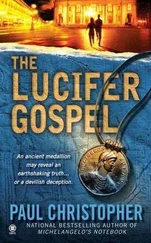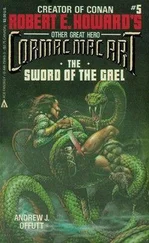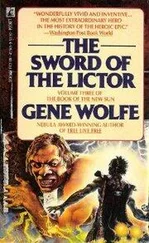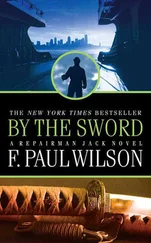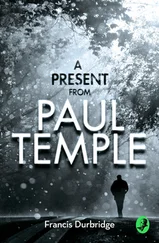Paul Christopher - The Sword of the Templars
Здесь есть возможность читать онлайн «Paul Christopher - The Sword of the Templars» весь текст электронной книги совершенно бесплатно (целиком полную версию без сокращений). В некоторых случаях можно слушать аудио, скачать через торрент в формате fb2 и присутствует краткое содержание. Жанр: Триллер, на английском языке. Описание произведения, (предисловие) а так же отзывы посетителей доступны на портале библиотеки ЛибКат.
- Название:The Sword of the Templars
- Автор:
- Жанр:
- Год:неизвестен
- ISBN:нет данных
- Рейтинг книги:3 / 5. Голосов: 1
-
Избранное:Добавить в избранное
- Отзывы:
-
Ваша оценка:
- 60
- 1
- 2
- 3
- 4
- 5
The Sword of the Templars: краткое содержание, описание и аннотация
Предлагаем к чтению аннотацию, описание, краткое содержание или предисловие (зависит от того, что написал сам автор книги «The Sword of the Templars»). Если вы не нашли необходимую информацию о книге — напишите в комментариях, мы постараемся отыскать её.
The Sword of the Templars — читать онлайн бесплатно полную книгу (весь текст) целиком
Ниже представлен текст книги, разбитый по страницам. Система сохранения места последней прочитанной страницы, позволяет с удобством читать онлайн бесплатно книгу «The Sword of the Templars», без необходимости каждый раз заново искать на чём Вы остановились. Поставьте закладку, и сможете в любой момент перейти на страницу, на которой закончили чтение.
Интервал:
Закладка:
It was hard to imagine such a pastoral and beautiful landscape as a war zone, but on the ninth of September, 1943, the Allies landed on the beaches of Salerno, fifty miles south, and by the middle of the month they were pressing inland and up the coast to Naples while the German Army under Albert Kesselring slowly withdrew to the north.
According to his diary, on September 28 Lutz Kellerman, leading a small company of crack soldiers from the 1st SS Division Leibstandarte SS Adolf Hitler, arrived in the town of Nola, approximately thirty kilometers northeast of Naples. They were equipped with a number of half-track armored personnel carriers mounted with heavy machine guns, some Kettenrad tracked motorcycles, half a dozen Panzer IV tanks, and a Kьbelwagen command car for Kellerman. Their official mission was to harass the enemy wherever possible, gather intelligence and forage for supplies, sending out three man “brandschatzen” pillage and burn patrols into the countryside. Kellerman, however, had his own agenda.
Having met with Amedeo Maiuri at a private rendezvous at the archaeologist’s villa in the suburbs of Naples two days before, Kellerman left the bulk of his men to secure and pacify the town while he and a handpicked platoon of men went to the place Maiuri had discussed with him at their meeting.
The location in question was a large, seventeenth-century Palladian palazzo on a hilltop just outside the tiny village of San Paolo Bel Sito a mile or so to the south. The Villa Montesano, as it was called, had a long and illustrious heritage going back to the Cistercian Order of the Knights of Calatrava, who were closely allied with their Cistercian brothers, the Templars.
The villa, built more like an abbey than a private home, had been passed down through a number of families over the centuries and was now owned by Signora Luisa Santamaria Nicolini, widow of Henry Contieri, whose uncle Nicola had been Archbishop of Gaeta. The ties with the Church and the Templars were clear, but more importantly, the entire Naples Archives were now being stored for safekeeping in the villa; 866 cases in all, containing more than thirty thousand precious volumes and fifty thousand parchment documents dating back to the twelfth century and the time of the Crusades.
According to Amedeo Maiuri, among those documents were the Angevin Templar Archive and a volume once possessed by the famous Templar navigator Roger de Flor, the near-mythical seaman knight who was said to have somehow spirited the Templar treasure out of the Holy Land and hidden it for safekeeping.
Maiuri had once seen the book and read the Latin inscription on its cover that said the words within the volume could only be understood by the man who owned the True Sword of Pelerin. The book was a copy of De laudibus novae militiae, the letter written by Bernard of Clairvaux to Hugues de Payens, first Grand Master of the Templars and Prior of Jerusalem.
Once again, according to the diary, Lutz Kellerman had gone to the villa, met with Signora Nicolini, the owner, and also with the resident director of the displaced Archives, a man named Antonio Capograssi. On being questioned by Kellerman, even under the threat of burning the villa and the contents of the Archives, neither the woman nor Capograssi admitted anything.
Capograssi insisted that no such book was in the Archives, and to prove it he showed the entire inventory to Kellerman. There was no mention of Roger de Flor or any copy of De laudibus novae militiae. Not satisfied, Kellerman began to pry open crates, helped by his men, including a young Rudy Drabeck.
After several hours they had found absolutely nothing. In the diary Kellerman mentioned that while they tore open crates they could hear the sounds of artillery in the distance. Allied artillery, coming up and inland from Salerno, on the way to Rome and eventually, as the SS general confided to his diary, to certain victory. Italy had fallen, the Reich would soon follow; it was only a matter of time. Finally, frustrated with the sound of artillery growing with every passing hour, he gave the order to his men: “Alles einaschern”-“Burn it all.”
Which is exactly what they proceeded to do. The members of his platoon piled paper, straw, and gunpowder in the four corners of each room, and then set it alight. Within minutes the Archives was enveloped in flames. In less than an hour the entire villa was an inferno. By the following morning the Villa Montesano was a smoking ruin, never to be occupied again, and Lutz Kellerman was gone.
Following the map directions they’d been given by the rental company in Naples, Holliday drove the little red car to the outskirts of the town of Nola, then turned onto the via Castel Cicala and headed into the open countryside again. They went around a high, circular hill crowned with the ruins of an ancient castle and into a small wooded and steep-sided valley. They turned onto an even narrower road then rose up out of the valley on the winding strada Comunale Nola-Visciano, then slowed.
“It should be somewhere on the left,” said Holliday, peering through the windshield. “Two big pillars on either side of a long driveway.”
“If Lutz Kellerman burned the Archives, why are we bothering with this place anyway?” Peggy asked.
“Because it’s the only thing we have to go on right now,” said Holliday. “Quit being a wet blanket.”
“I’m trying to be a realist, Doc.” She punched him affectionately on the shoulder. “Someone’s got to hold my romantically inclined uncle in check.”
Holliday caught something on the edge of his peripheral vision and slowed the car even more.
“There,” he said, spotting what he’d been looking for: two crumbling, turret-like pillars guarding the entrance to an overgrown, rutted driveway, both sides of the road guarded by groves of ancient, twisted olive trees. He turned the car, and they bounced down the driveway, the tall weeds in the center of the ruts brushing against the bottom of the chassis. Loose stones clattered against the side panels. A hundred yards farther on, they reached the weed-clotted remains of what had once been the Villa Montesano.
They parked the Fiat and wandered through the scattered stones of the once-proud estate. Even in ruins it was impressive. The palazzo had been oriented to the east, looking down the wooded hillside. From the crest of the hill, the view swept out over the town a few miles away and farther to the city and the Bay of Naples, a sublime azure dream melding with the bright blue sky in the distance.
Once there had been a lavish terraced garden below a series of columned balconies where now there were only weeds, broken stone, and heavy undergrowth. The floors of the palazzo, once a rich display of mosaic, lay shattered and stained by over sixty years of exposure to the elements. Room after room lay roofless and open to the sun and rain, their frescoed walls faded and blotted with mold.
Roof beams rotted on the ground like scattered bones. Wrens made nests in the lintels of empty windows. A gold and brown, delicately checkered Marsh Fritillary butterfly drank nectar from the purple trumpets of a Dragonmouth nettle in the shelter of a doorway. Somewhere a cicada sang its droning, high-pitched song. There was no wind at all; the air was perfectly still. A frozen country landscape painted by Canaletto.
Behind the ruins on the plateau of the hill there were the remains of several outbuildings, the abandoned ornamental gardens, long forgotten, overgrown, and choked with weeds. The only building that looked intact and at all maintained was a small gardener’s potting shed at the edge of the neglected flowerbeds. At the far side of the estate there was a screening stand of walnut trees. Beyond that, in the middle distance, were more verdant hills, and then the first rugged mountains of the Apennines.
Читать дальшеИнтервал:
Закладка:
Похожие книги на «The Sword of the Templars»
Представляем Вашему вниманию похожие книги на «The Sword of the Templars» списком для выбора. Мы отобрали схожую по названию и смыслу литературу в надежде предоставить читателям больше вариантов отыскать новые, интересные, ещё непрочитанные произведения.
Обсуждение, отзывы о книге «The Sword of the Templars» и просто собственные мнения читателей. Оставьте ваши комментарии, напишите, что Вы думаете о произведении, его смысле или главных героях. Укажите что конкретно понравилось, а что нет, и почему Вы так считаете.


